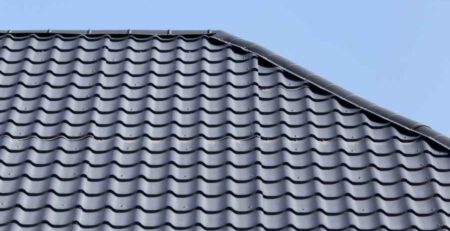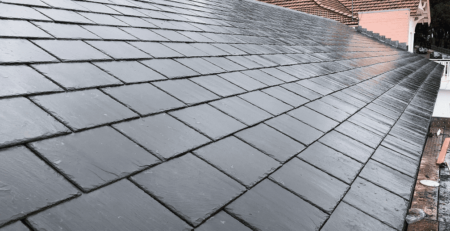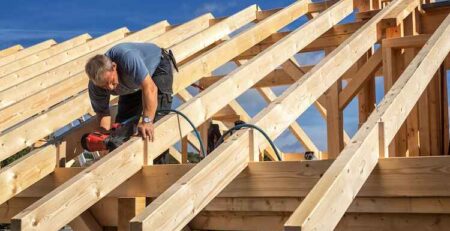How a Home Roofing Inspection Works
A home is more than just four walls and a foundation; it is a sanctuary, a place of comfort and security. And at the heart of it all lies the roof, protecting us from the elements and ensuring our safety.
But have you ever wondered how this vital component of your home is maintained and assessed?
How does a home roofing inspection work?
In this discussion, we will take a closer look at the intricate process of evaluating the condition of a roof, from the initial assessment to the final report and recommendations.
Prepare to be enlightened as our experienced Toledo roofers unveil the secrets behind this essential procedure that guarantees the longevity and resilience of your shelter.
Initial Assessment: Identifying Potential Issues
During the initial assessment of a home roofing inspection, it is crucial to identify potential issues using a detailed and observant approach meticulously.
This requires thoroughly examining the roof’s condition and looking for common problems such as leaks, cracks, missing or damaged shingles, and signs of water damage.
A trained inspector will carefully inspect the flashing around chimneys, skylights, and vents, as these areas are prone to leaks.
They will also assess the roof’s overall structural integrity, checking for any sagging or unevenness.
Furthermore, a cost estimation is an essential part of this initial assessment.
By identifying potential issues early on, homeowners can better understand the potential repair or replacement costs, allowing them to plan and budget accordingly.
Inspection Tools and Equipment: What the Professionals Use
Professionals rely on various specialized tools and equipment designed to detect and assess potential issues to conduct a thorough and precise home roofing inspection.
These advanced inspection technologies enable inspectors to identify problems that may not be visible to the naked eye.
Here are some of the tools commonly used by professionals in the roofing industry:
- Infrared Thermography: This method employs thermal imaging cameras to identify temperature variations on the surface of the roof. It helps identify heat loss, moisture infiltration, and insulation problems.
- Moisture Meters: These handheld devices measure the moisture content of roofing materials. They help identify areas of water damage and potential leaks.
- Drones: Equipped with high-resolution cameras, drones provide aerial views of the roof, allowing inspectors to assess the condition of hard-to-reach areas without ladders or scaffolding.
- Roofing Gauge: This tool measures the thickness of roofing materials, such as shingles or membranes, to ensure they meet industry standards.
Roofing Materials Evaluation: Assessing Durability and Condition
Roofing materials evaluation involves meticulously examining the durability and condition of the various components that comprise the roof structure.
This evaluation is crucial for determining the overall quality and longevity of the roof and making informed decisions about roofing material selection and cost analysis.
When assessing the durability of the roofing materials, professionals consider factors such as weather resistance, impact resistance, and resistance to aging.
They examine the condition of the materials for signs of wear and tear, damage, or deterioration.
This evaluation helps identify areas requiring repairs or replacements and lets homeowners make informed decisions regarding roofing needs.
Additionally, by analyzing the roofing materials, professionals can estimate the costs associated with maintenance, repairs, or complete roof replacements, helping homeowners plan their budgets accordingly.
Structural Inspection: Checking for Signs of Damage or Weakness
A comprehensive structural inspection is conducted to meticulously examine the roof for any signs of damage or weakness, ensuring the overall integrity and safety of the structure. This step is crucial in identifying issues requiring roofing repair or maintenance strategies.
Here are four key areas that are thoroughly inspected during a structural inspection:
- Framing and Trusses: The inspector checks for any signs of sagging, bowing, or damage to the roof framing and trusses. This helps identify any structural weaknesses that may compromise the roof’s stability.
- Decking: The roof decking is closely examined for signs of rot, water damage, or deterioration. Any soft spots or areas of weakness are identified to prevent further damage and ensure a solid foundation for the roof.
- Support Systems: The inspector inspects the support systems, including beams, posts, and columns, for any signs of damage, decay, or structural deficiencies. This ensures that the roof is adequately supported and can withstand the weight and stress placed on it.
- Connections: The connections between roof components, such as the trusses and framing, are thoroughly inspected for signs of wear, damage, or inadequate fastening. This helps identify potential weak points and ensures the roof is securely attached to the structure.
Final Report and Recommendations: Providing Detailed Findings and Next Steps
Upon completion of the structural inspection, a detailed final report is prepared, outlining the findings and providing recommendations for any necessary repairs or maintenance.
The final report is a crucial component of the home roofing inspection process, as it provides homeowners with a comprehensive understanding of the roof’s condition and the steps required to maintain or repair it.
The report includes a detailed analysis of the roof’s overall condition, highlighting any signs of damage or weakness observed during the inspection.
It also provides repair estimates, giving homeowners an idea of the costs of addressing the identified issues.
The recommendations provided in the report serve as a roadmap for homeowners, guiding them on the next steps to take to ensure their roof’s long-term durability and functionality.











